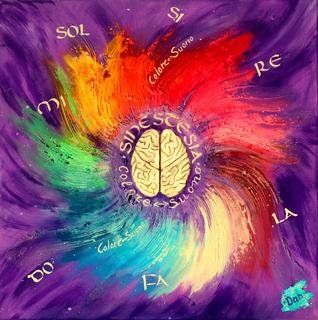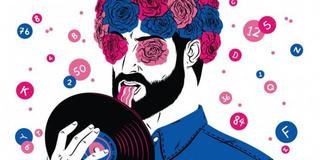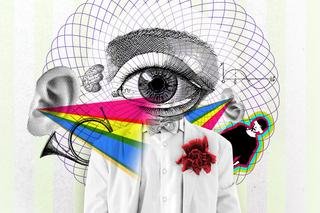SYNESTHESIA: Can you SEE a SONG? or Can you SMELL a COLOR? What is Synesthesia? Have you heard about it? Do you have it?
Years ago people used to underestimate people who said they could "see a song" or "smell the colors", but now through scientific studies it has been discovered that there are people who can really do it, due to a perceptual phenomenon called Synesthesia
Synesthesia is a combination of the senses. It consists of experiencing sensations coming from different senses at the same time before a single perceptive act. For example: synesthetes can see sounds, touch a soft surface and feel a sweet taste, or smell a color

Source
All these perceptions are involuntary, just as when we look at a white wall, we still see it white whether we want it or not. It is something totally spontaneous, that can not be controlled, and that has fascinated for years both scientists and artists. In some cases the effects are spectacular, there are people who see colors when they hear certain sounds, and they can even taste the colors involuntarily, as is the case of Elisabeth Sulser, a woman resident in Switzerland who has this perceptual phenomenon

Source
Do synesthetes have better memory?
A recent work published in Neuroscience and Biobehavioral Reviews reviews the different case and group studies carried out with the aim of analyzing whether these people have better memories than ordinary mortals. The authors conclude that although there seems to be some benefit in memory for synesthetes, it is not exceptional, or at least in all cases. They propose that synesthesia could affect the way in which information is encoded, giving rise to a dual coding that would allow them to learn the information and recover it with a greater number of clues

Source
However, although for some tasks it may be an advantage, for others it may be a difficulty. One of the most frequent synesthesias is that between graphemes (written letters) and colors. In this case, some people with synesthesia have difficulty reading because they have to inhibit the colors to focus on the content of the words, demanding greater resources of selective attention

Source
Whether for good or ill at the intellectual level, what the cases of synesthesia remind us of is that reality is individual, according to the way each one of us interprets it. And that is perception, a creation of our brains, and therefore we can not ensure that two different people are perceiving the same
The lesson to be learned is clear. We may not be able to feel colored kisses or taste the names of people. What we can do is strive to improve our learning strategies by enhancing those residual brain connections that may be waiting to be reactivated. Use different senses to learn information and remember it better

Source
Thank you for your time
Great post and a really interesting topic. It's long been hypothesised that it takes about 3 weeks for the brain to figure out where to send information from what senses, so they think we're all synesthesic for a little bit! :)
Thank you, yes is a very interesting topic which most people don't know anything about it. That's why I thought in make this post
We were just talking about this today, but my middle child had this as a young child. It then slowly faded away.
Hola @valery24, upv0t3
Este es un servicio gratuito para nuevos usuarios de steemit, para apoyarlos y motivarlos a seguir generando contenido de valor para la comunidad.
<3 Este es un corazón, o un helado, tu eliges .
: )
N0. R4ND0M:
2287 7551 6507 6977
5865 3739 8717 5325
4102 5988 5659 3070
1509 2758 6758 5331
Congratulations @valery24! You received a personal award!
Click here to view your Board of Honor
Congratulations @valery24! You received a personal award!
You can view your badges on your Steem Board and compare to others on the Steem Ranking
Vote for @Steemitboard as a witness to get one more award and increased upvotes!